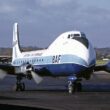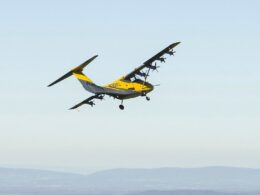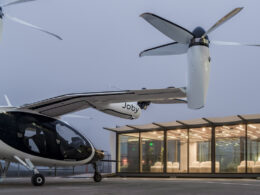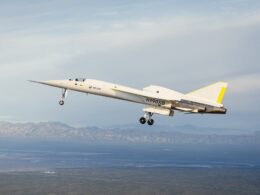Can flying in formation like geese help commercial aircraft to save fuel on long-haul flights?
Airbus says a demonstration flight on November 9, 2021 across the Atlantic has shown that wake energy retrieval can be done safely and achieve fuel and emissions savings.
The European aerospace group flew two Airbus A350 test aircraft in regulated transatlantic airspace at three kilometers apart from Toulouse, France to Montreal, Canada.
The following aircraft, MSN59, was positioned in the wake updraft of the leader aircraft, MSN1. That allowed the following A350 to reduce engine thrust and fuel consumption. The same energy-saving principle is seen in large grips of migrating birds, such as geese, which fly in a V-formation.
It may look like a single line, but it’s actually the track of two aircraft. @Airbus has just completed its first transatlantic #Fellofly with two A350s between Toulouse and Montreal. See playback at https://t.co/G4jlBx8soZ and https://t.co/oAxbW8CDdz pic.twitter.com/NPsmUXkZ9d
— Flightradar24 (@flightradar24) November 9, 2021
“Over 6 tons of CO2 emissions were saved on the trip, confirming the potential for more than a 5% fuel saving on long-haul flights,” Airbus noted in a statement on November 9, 2021.
The fello’fly flight demonstrator project was launched in 2019 using biomimicry, or products, materials and design inspired by nature.
Airbus said pilots from partner airlines SAS and Frenchbee were onboard as observers during the A350 demonstration flights. Air navigation service providers along the route also supported the trial.
“This demonstration flight is a concrete example of our commitment to making our decarbonisation roadmap a reality. It also speaks to how collaboration across the industry will be key to making this happen,” said Sabine Klauke, Chief Technical Officer at Airbus.
The next step is to gain the support of the authorities, Airbus said, so that the new concept can be certified.
“The opportunity to get this deployed for passenger aircraft around the middle of this decade is very promising. Imagine the potential if fello’fly was deployed across the industry!” Klauke said.
These two #A350 “fellos” performed the 1st transatlantic flight as paired aircraft from Toulouse to Montreal airport!
— Airbus (@Airbus) November 9, 2021
What’s #fellofly? A follower retrieves wake energy lost by a leader, reducing engine thrust & fuel consumption of over 5% per trip.
Watch to find out more. pic.twitter.com/xt6w2h11RB










